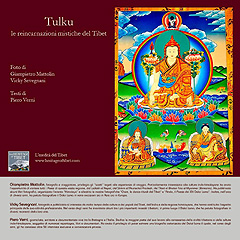|
Newsletter |
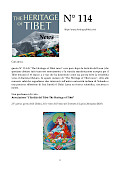
|
25/03/2025Pubblicato online il numero 114 della Newsletter The Heritage of Tibet.
> Archivio completo delle Newsletter di The Heritage of Tibet
|
|
Facebook
|
|
The Heritage of Tibet è anche su Facebook
|
|
Nuova edizione 2018 |
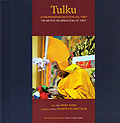
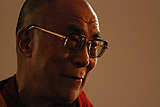
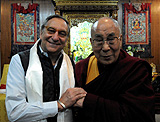

|
Tulku, le incarnazioni mistiche del Tibet I tulku sono quei maestri spirituali che scelgono di ritornare nel mondo, esistenza dopo esistenza, per essere di aiuto agli esseri viventi.
Tulkus, the mystic incarnations of Tibet, by Piero Verni and Giampietro Mattolin; Venezia 2015, pp. 192 - € 30 Tulkus are those spiritual teachers who choose to return to the world, lifetime after lifetime, in order to help living beings. This tradition of mystic reincarnation is peculiar to Vajrayana Buddhism, the form of Buddha's teaching found in Tibet, the Himalayan regions and Mongolia ... [ Read more ] |
L'eredità del Tibet
Il Tibet, questo sterminato altopiano grande quasi quanto l'Europa che separa e nel medesimo tempo collega le steppe mongole alle pianure indiane è, e soprattutto è stato, un immenso crocevia di razze, culture, religioni, etnie e civiltà. Forse nessun altro luogo dell'Asia ha tanto colpito la fantasia e l'inconscio del mondo occidentale, che ha voluto vedere nel Tibet il contenitore mistico di tutte le speranze, le fantasie, i sogni e i desideri che non riusciva (o non riusciva più) ad appagare. Il Tibet come Shangri-là dello spirito, luogo mitico dove i saggi potevano volare, la gente era felice e alcuni iniziati avevano forse scoperto il segreto dell'immortalità. Così veniva descritto il Tibet in alcuni popolari resoconti di viaggio dell'Ottocento e dei primi decenni del Novecento. Ovviamente le cose stavano diversamente. Il Tibet, come del resto le altre nazioni del nostro pianeta, non era un mitico paradiso terrestre, la gente non era tutta e sempre felice e nessuno aveva scoperto il segreto dell'elisir di lunga vita. Quella tibetana era però una civiltà di grande valore. Poco sviluppata dal punto di vista del progresso materiale era invece incredibilmente progredita sotto il profilo della ricerca filosofica e interiore. La gente, a qualsiasi gruppo sociale appartenesse, mostrava una coesione culturale e una fiducia nei confronti del proprio stile di vita che non aveva paragoni nelle limitrofe nazioni asiatiche.
L'invasione cinese degli anni '50, soprattutto nel decennio allucinato ed iconoclasta della "Rivoluzione Culturale", ha cercato di annientare quel mondo portandolo sino alla soglia dell'estinzione totale. Con i cambiamenti politici avvenuti in Cina nell'ultimo trentennio le cose sono leggermente mutate e i tibetani stanno tentando di mantenere in vita almeno l'essenziale della loro civiltà, sia pure in mezzo a difficoltà di ogni genere. Le autoimmolazioni con il fuoco che da oltre quattro anni illuminano i cieli del Tibet con i loro tragici bagliori dimostrano quali siano le effettive condizioni in cui i tibetani sono costretti a vivere nel loro stesso Paese. Centoquarantadue persone appartenenti ad ogni settore della società tibetana (monaci e laici, adolescenti e anziani, donne e uomini) che scelgono di protestare attraverso il più atroce dei sacrifici, raccontano cosa sta accadendo in Tibet meglio di qualsiasi discorso o analisi sociologica.
Ma la civiltà del Tibet, così duramente colpita sul Tetto del Mondo, continua a vivere nel vasto spazio di quello che generalmente viene definito "Tibet etnico" (Ladak, Sikkim, Mustang, Dolpo, Bhutan etc.). Vale a dire quell'universo himalayano abitato da popolazioni di origine tibetana che, pur non essendo mai stato governato direttamente da Lhasa, ha sempre espresso e continua ancora oggi ad esprimere una cultura assolutamente consonante con quella tibetana per quanto riguarda modi di vita, tradizioni, composizione sociale e religione. E' palese l'odierna importanza del "Tibet etnico" poiché consente di incontrare quella koiné che nel Paese delle Nevi non riesce più ad esprimersi come vorrebbe.
Infine vi è il Tibet dell'esilio, quella microsocietà ricostruita dagli oltre centomila profughi tibetani che si sono insediati in India, Nepal, Bhutan e che cercano in ogni modo possibile di preservare il cuore delle proprie radici. Un Tibet dell'esilio che nonostante mille problemi e difficoltà sembra in grado di vincere una impossibile scommessa con la storia.
Se è vero, e noi pensiamo che lo sia, quello che più volte il Dalai Lama ha affermato vale a dire che il Tibet sta attraversando il periodo più oscuro e difficile della sua storia millenaria, allora il Tetto del Mondo ha più che mai bisogno dell'aiuto della comunità internazionale. Se quella antica e nobile cultura dovesse sparire per sempre, annientata dal rullo compressore di un colonialismo brutale e violento, sarebbe una tragedia non solo per i tibetani ma per il nostro intero pianeta che perderebbe una delle sue più significative espressioni.
E' questa consapevolezza che ci ha spinti ha unire la nostra modesta voce al coro di quanti cercano di sostenere la battaglia civile e non violenta del popolo tibetano. Ed è per questo che abbiamo dato vita al progetto "L'eredità del Tibet" che si propone di favorire la conoscenza dei tratti essenziali della civilizzazione tibetana presso un pubblico il più ampio possibile.
Il primo passo di questo progetto è costituito dalla pubblicazione di tre volumi (Himalaya, 2006; Mustang, 2007 e Lung ta - Universi Tibetani, 2012, oggi disponibili anche in un unico cofanetto) in cui abbiamo cercato di condurre il lettore all'interno dei principali temi e luoghi della cultura del Tibet. Il secondo passo è una mostra fotografica interamente dedicata ai Cham, le danze rituali dei monaci, uno degli aspetti più affascinanti e meno conosciuti della civiltà tibetana; aspetto che, per la ricchezza e la complessità dei suoi elementi simbolici, è stato spesso non compreso e male interpretato in occidente. Il terzo passo è un documentario sui Cham realizzato per dare la possibilità, a quanti sono interessati, di poter apprezzare queste danze rituali non solo tramite l'immagine statica colta dall'obiettivo fotografico ma anche nell'effettivo dinamismo delle loro esecuzioni.
E per il futuro sono in preparazione altre idee ed iniziative, perché siamo ben consapevoli che l'eredità del Tibet appartiene non solo alle donne e agli uomini che abitano il Tetto del Mondo ma anche all'intera umanità e quindi a tutti noi.
Giampietro Mattolin
Piero Verni
The Heritage of Tibet
The Tibetan plateau is almost as big as Europe, and its interminable distances separate and at the same time connect the Mongolian steppes with the Indian plains. It is and above all was a vast crossroads of civilisations, races, cultures, religions and ethnic groups. Perhaps no other place in Asia has so captured the imagination and the unconscious mind of the West, which chose to see Tibet as the mystical repository of all the hopes, fantasies, dreams and desires which it could not (or could no longer) satisfy at home. Tibet was a Shangri-La of the spirit, a mythical place where sages could fly, where people were happy and a few initiates had perhaps discovered the secret of immortality. This is how Tibet was described in popular travellers' tales of the 19th and early 20th centuries. Of course it wasn't really like that: Tibet, along with the rest of our planet, was not an earthly paradise; its people were not all constantly happy, and nobody had discovered the elixir of eternal life. Nevertheless, Tibetan civilisation was rare and precious. Although material progress was limited, the culture was extraordinarily advanced in terms of philosophical and spiritual research. And people of all social groups displayed a cultural cohesion and a loyalty to their own way of life which had no equal in the surrounding nations of Asia.
The Chinese invasion of the 1950s, and especially the hallucinatory, iconoclastic decade of the "Cultural Revolution", attempted to wipe out that world and brought it to the brink of total extinction. Political changes in China in the last thirty years have slightly changed the situation so that the Tibetans, despite all kinds of difficulties, are trying to keep at least the essence of their civilisation alive. But the self-immolations by fire which for more than five years have been lighting the skies over Tibet with their tragic flares show the effective conditions in which Tibetans are forced to live in their own country. The choice of 142 people from every walk of life (monks and laypeople, adolescents and elderly people, women and men) to protest through this most atrocious form of self-sacrifice tells us what is happening in Tibet better than any written account or sociological analysis.
But the Tibetan civilization which has been so hard hit on the Roof of the World lives on across the vast expanse of what is generally known as "ethnic Tibet", that is in Ladakh, Sikkim, Mustang, Dolpo and Bhutan - the Himalayan universe inhabited by peoples of Tibetan origin who, although they have never been directly governed by Lhasa, have always had a culture completely consonant with Tibet's in its way of life, traditions, social composition and religion. The importance of "ethnic Tibet" is all too evident today, since it allows us to make contact with that common cultural and religious idiom which can no longer express itself freely in the Land of Snows.
Finally there is Tibet in exile, the subculture reconstructed by the over one hundred thousand Tibetan refugees who have settled in India, Nepal and Bhutan and who strive in every way possible to preserve their roots. Despite innumerable problems and difficulties, this exiled Tibet seems to be capable of meeting the extraordinary challenge which history has imposed on it.
If what the Dalai Lama has often said is right, and we believe that it is, then Tibet is going through the darkest and most difficult period in its millennial history, and the Roof of the World needs the help of the international community more than ever before. If that ancient and noble culture should disappear forever, crushed under the steamroller of a brutal and violent form of colonial tyranny, it would be a tragedy not only for the Tibetans but for the entire planet, which would lose one of its most meaningful civilizations.
Our awareness of this risk leads us to add our small voice to the chorus of those who want to support the non-violent civil struggle of the Tibetan people. This is what prompted us to launch "The Tibetan Heritage" project, which aims to foster knowledge of the essential features of Tibetan civilization among as vast a public as possible.
The first step in this project was the publication of three volumes (Himalaya, 2006, Mustang, 2007, and Lung ta - Tibetan Universes, 2012, now also available as a boxed set), which attempt to guide the reader through the principal themes and sites of Tibetan culture. The second step is an exhibition entirely devoted to Chams, ritual dances by monks, which constitute one of the most fascinating and little known aspects of Tibetan civilization. Due to the richness and complexity of their symbolic elements, Chams have often been misunderstood or misinterpreted in the West. The third step is a documentary about Chams, to give interested people the chance to appreciate these ritual dances not only in fixed photographic images but also through the real dynamism of their execution.
And for the future we are considering various other ideas and initiatives, because we are well aware that the Tibetan heritage belongs not only to the men and women living on the Roof of the World but to all humanity, to all of us.
Giampietro Mattolin
Piero Verni
